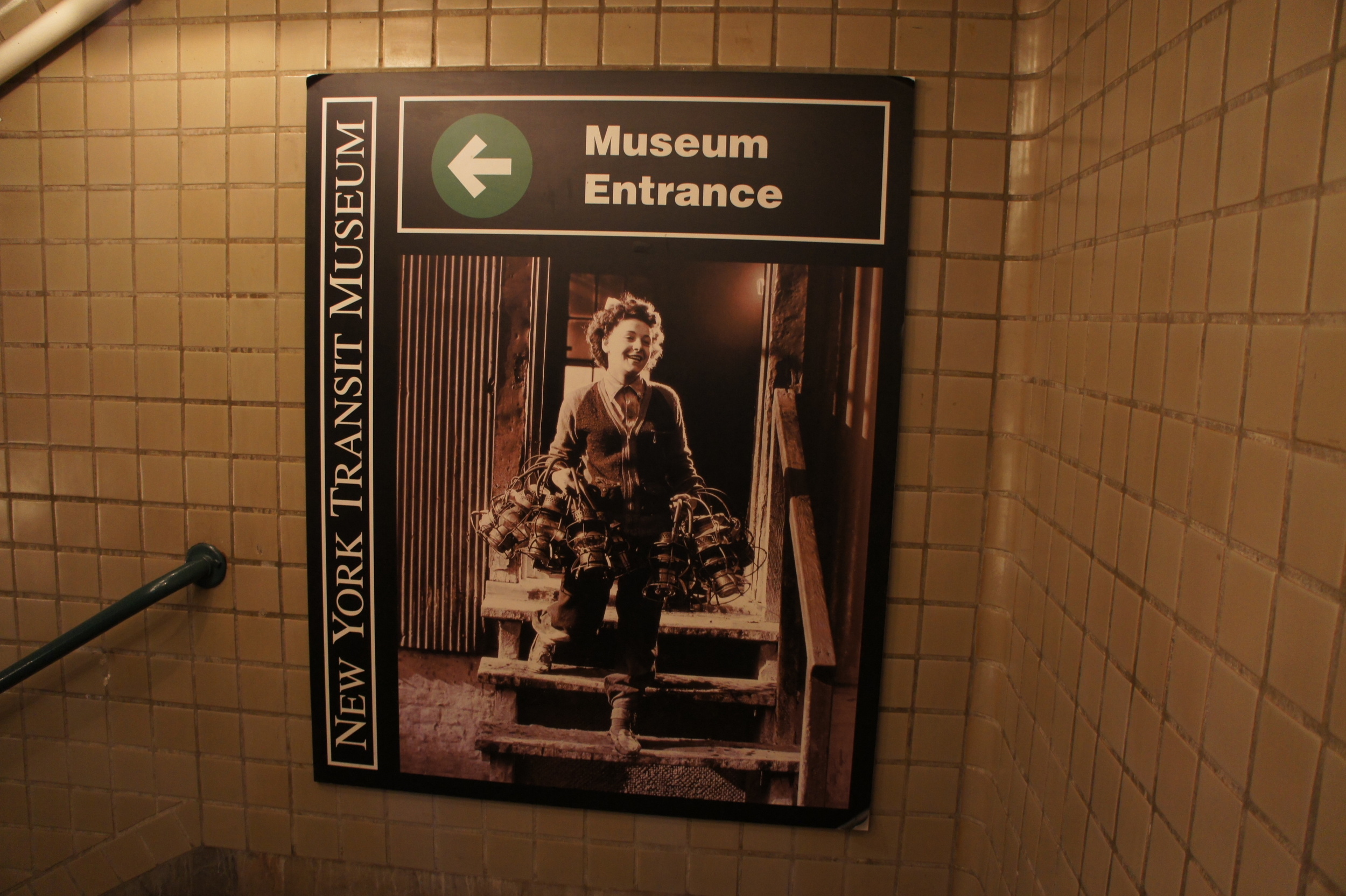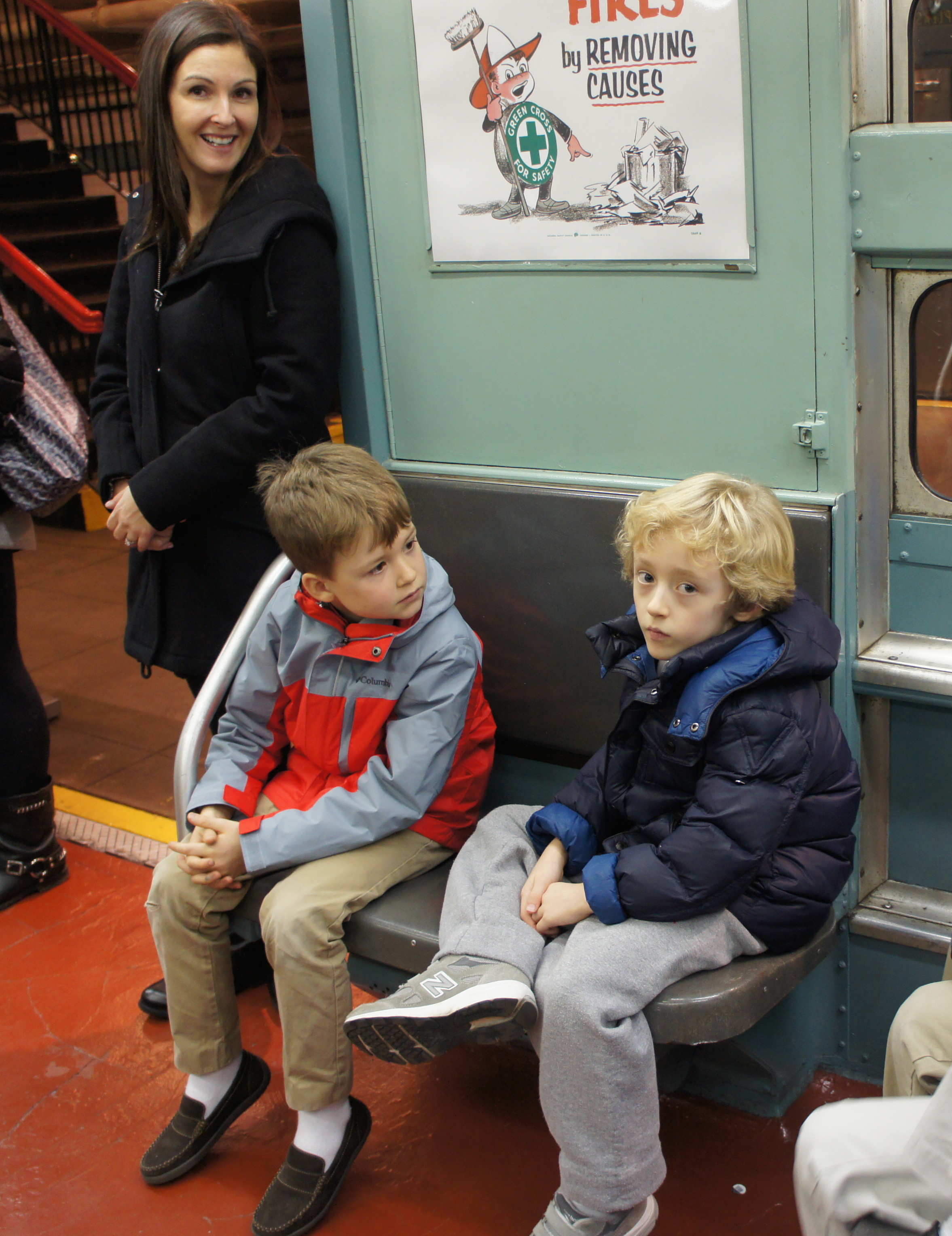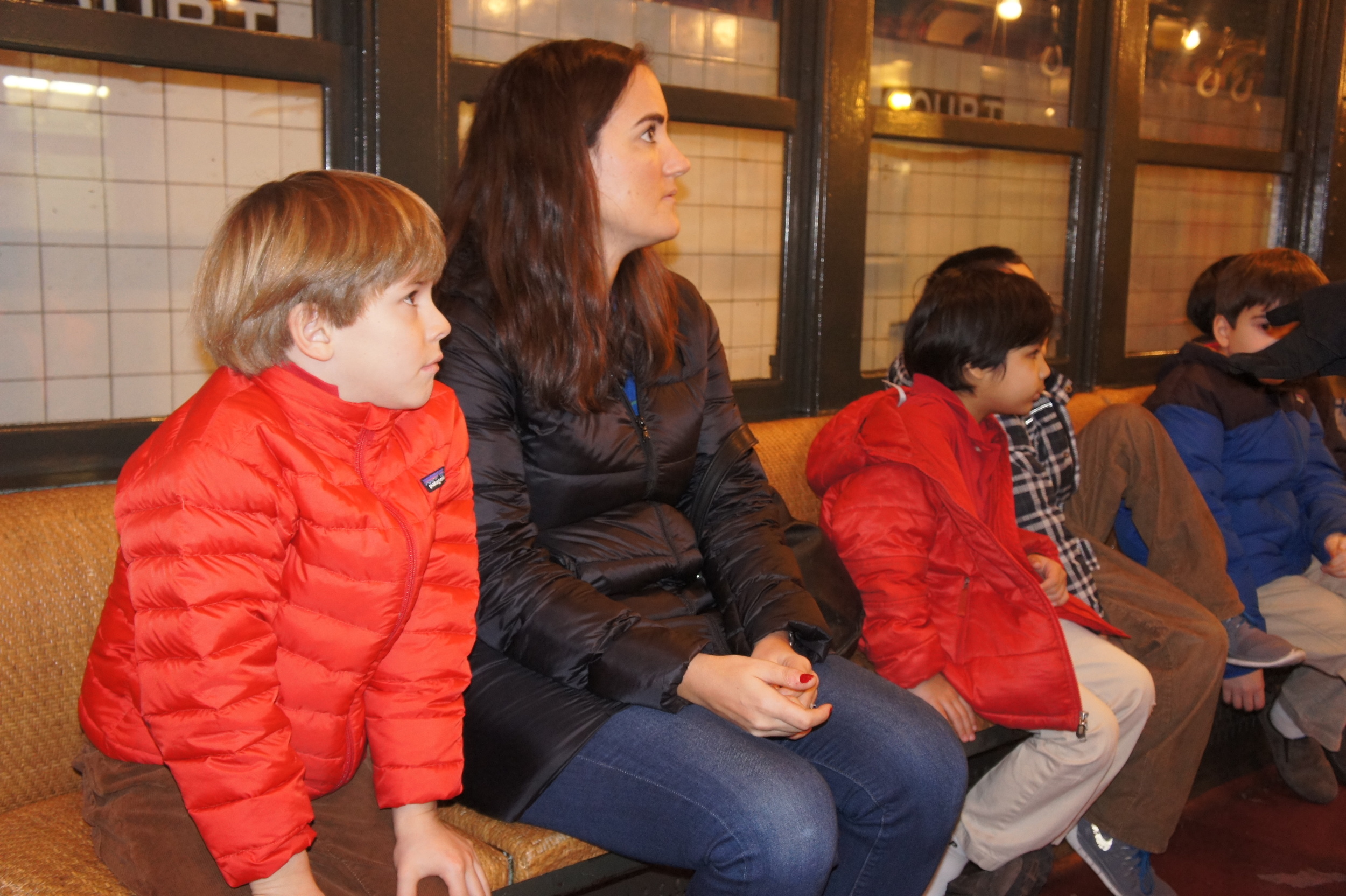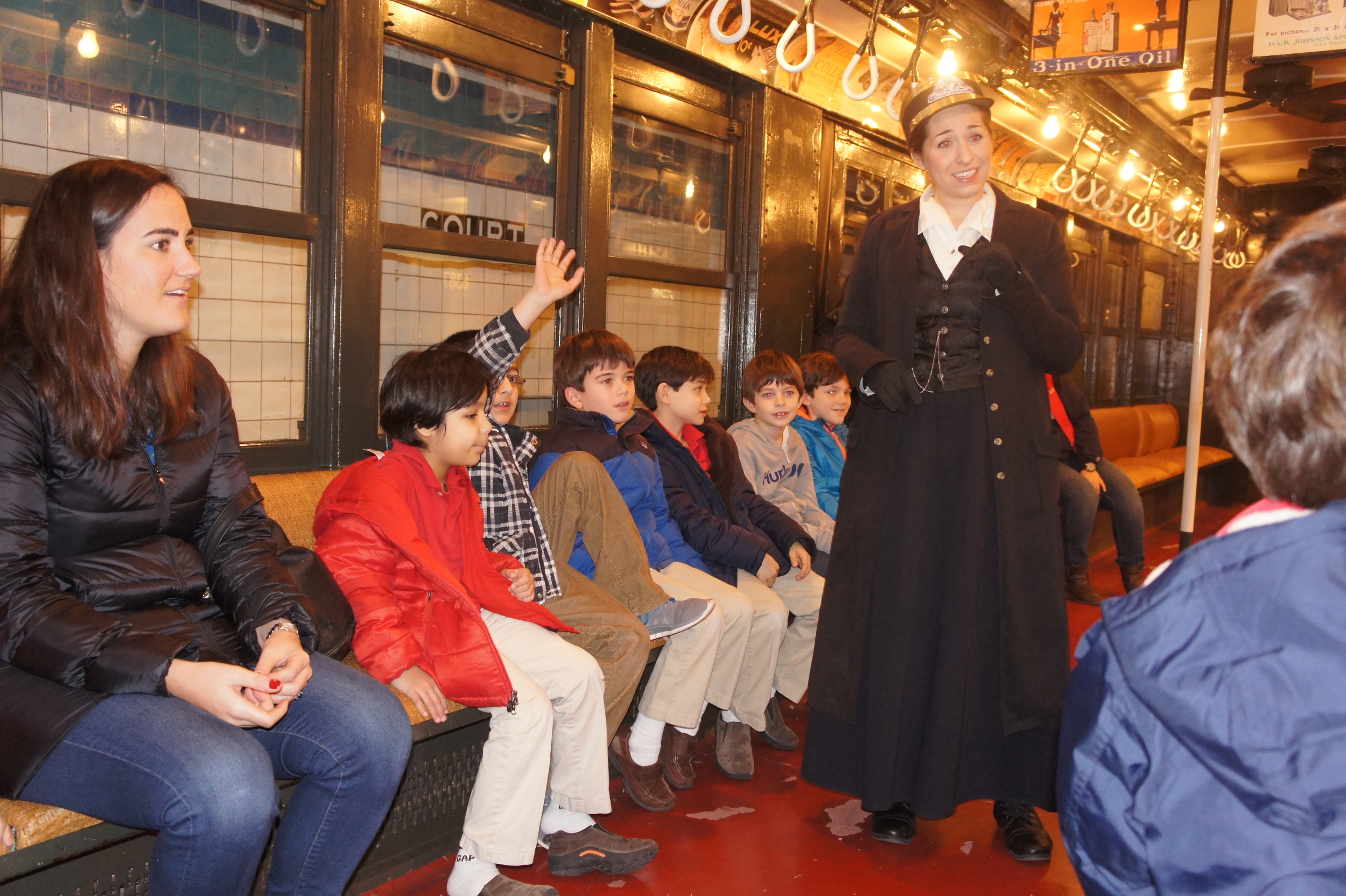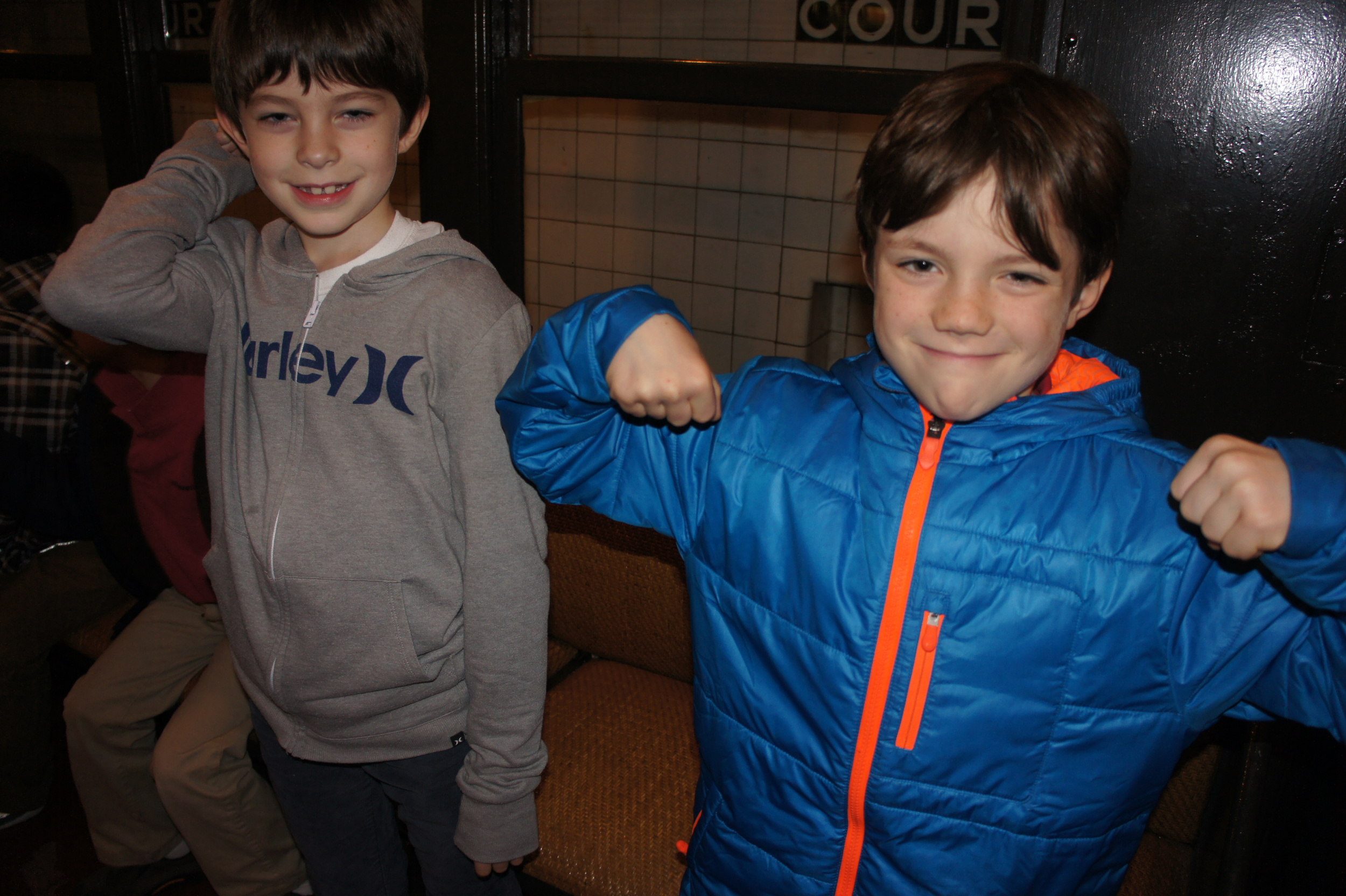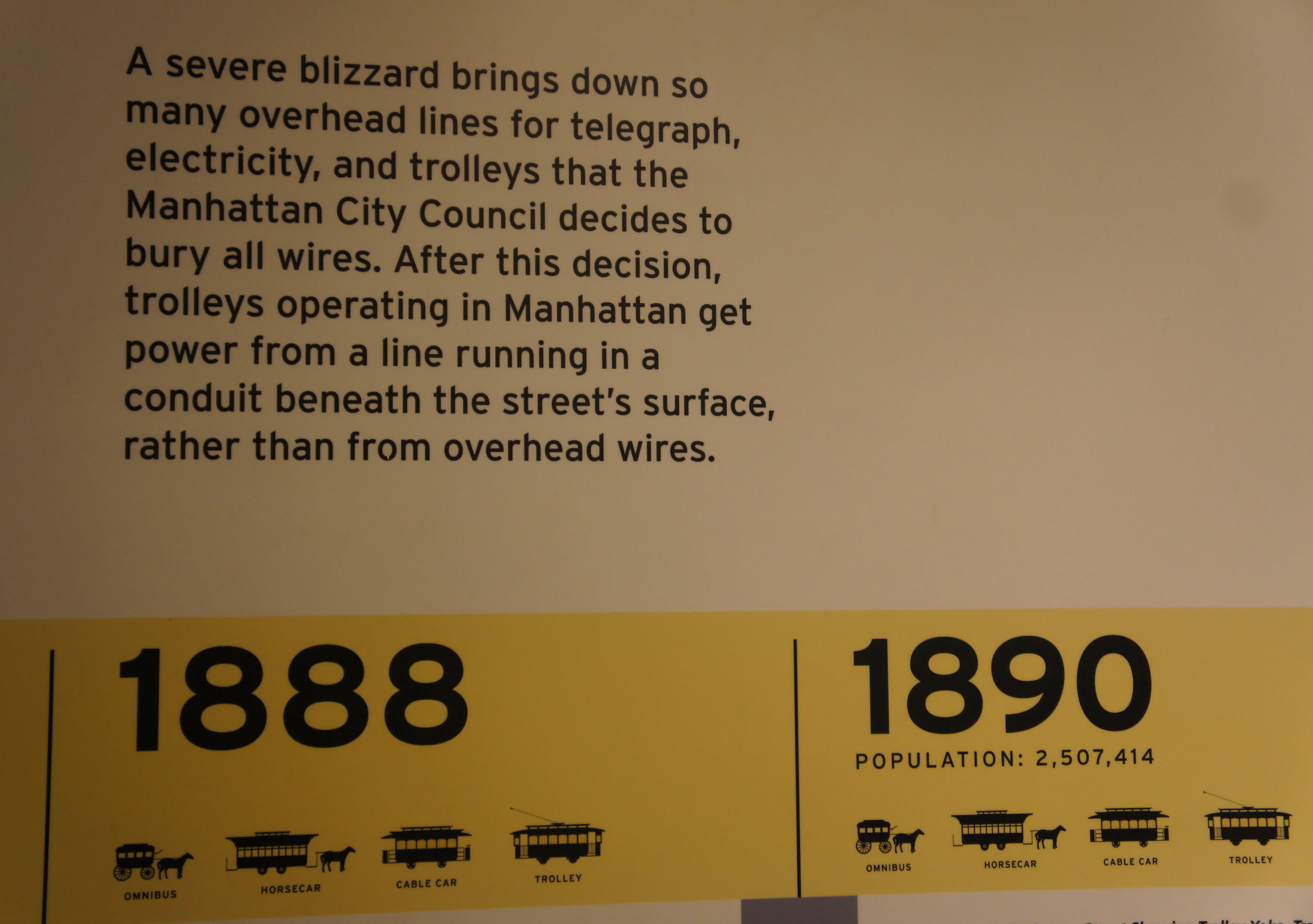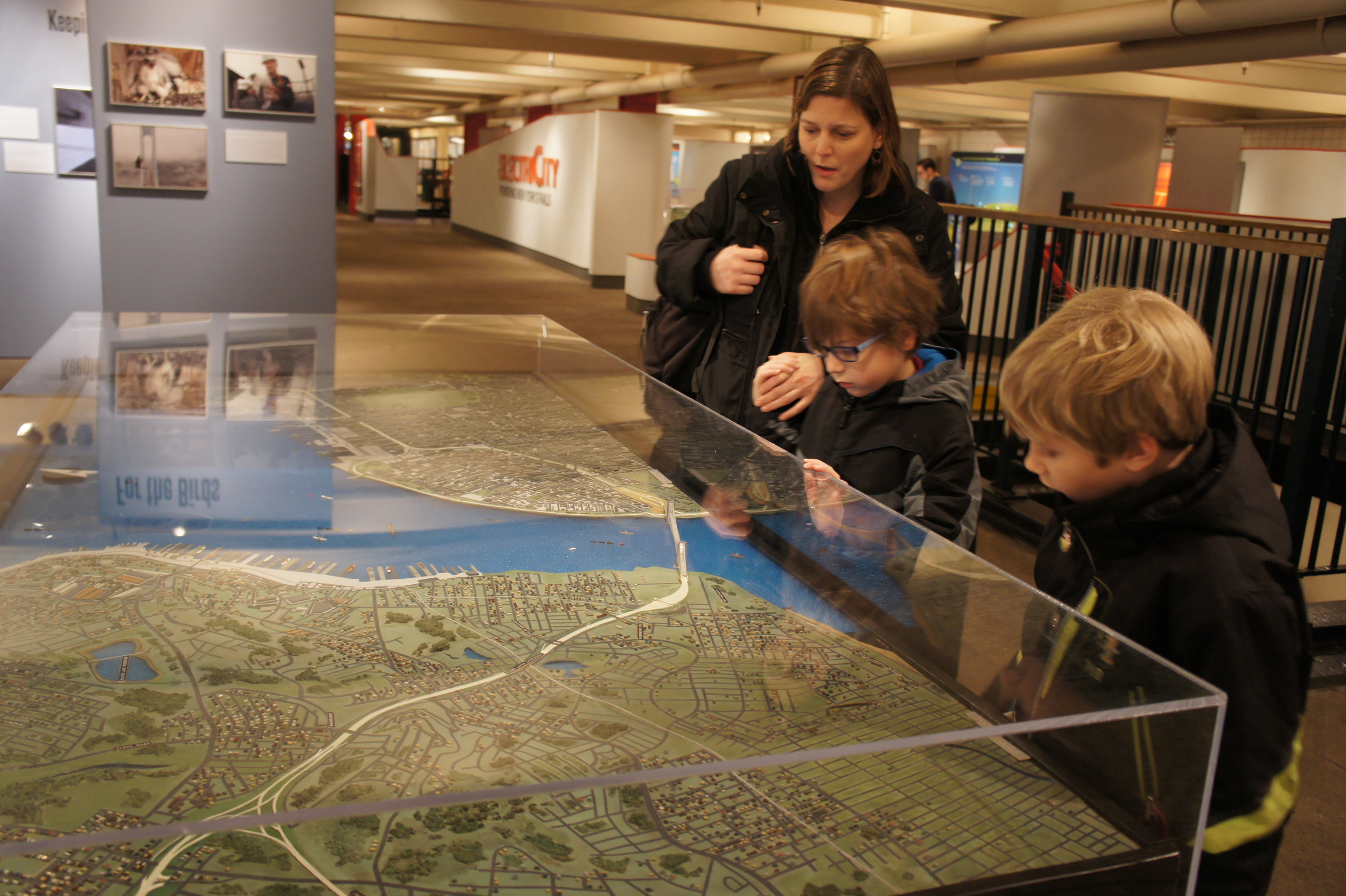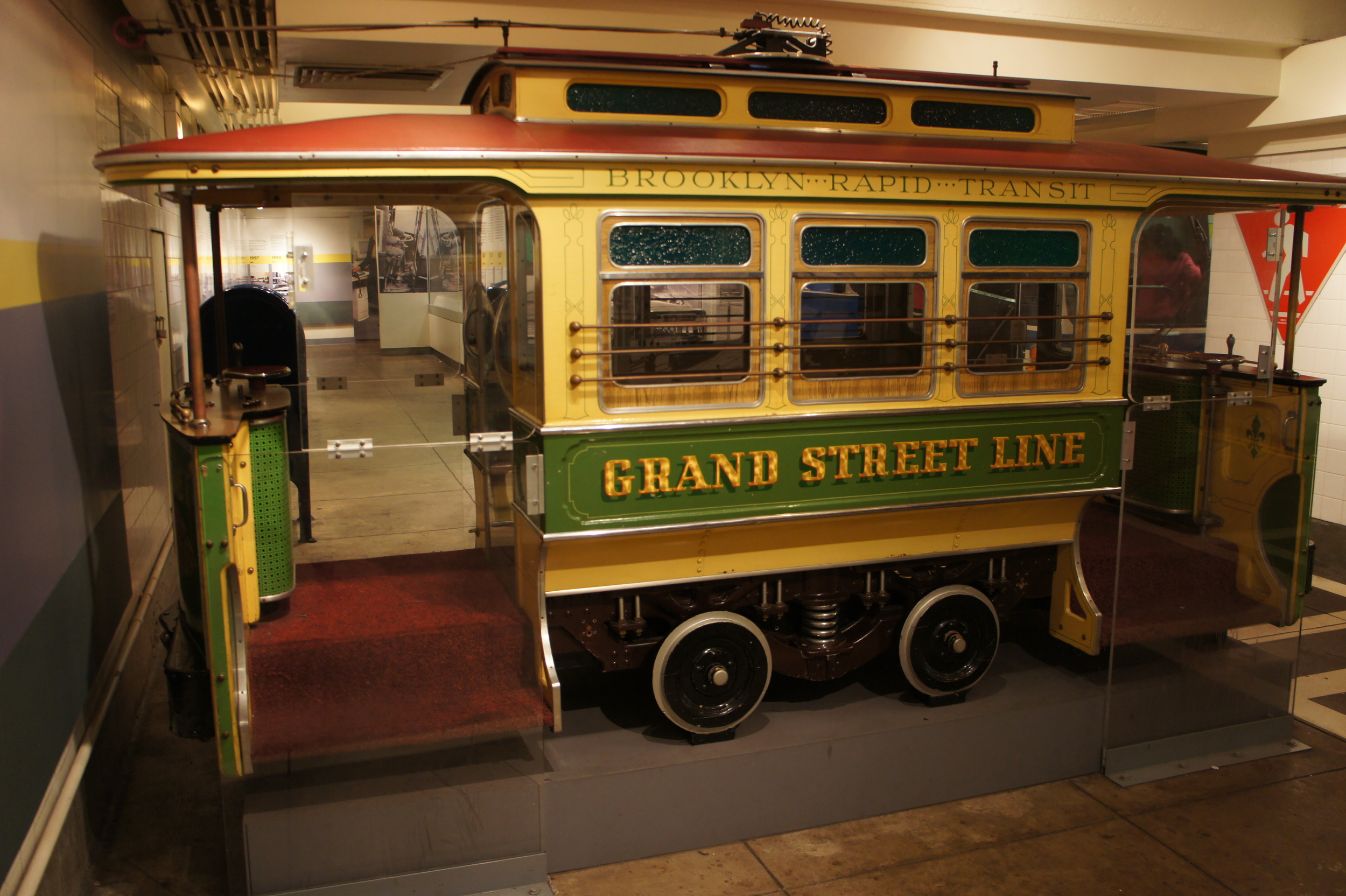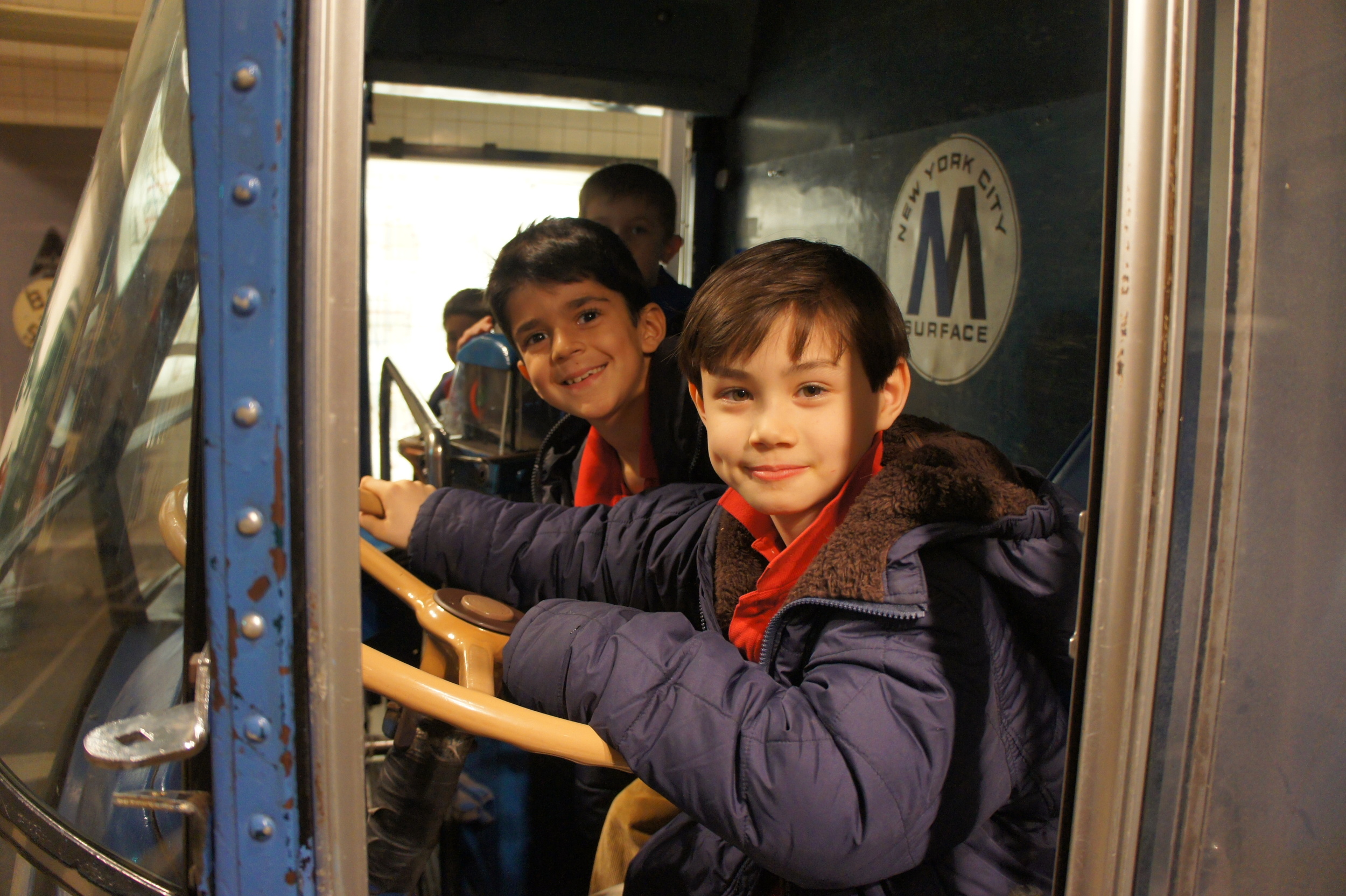Second Grade Boys “On Board” With Transit History
Second grade Browning boys were “transported” to the year 1917 on December 17 when they visited the New York Transit Museum housed in an historic 1936 IND subway station in downtown Brooklyn. Accompanied by their teachers Rachel Gerber and Jackie Pellenberg, associate teacher Hallie Fischberg, and parent chaperones, they traveled on a school bus to this fascinating museum, the largest in the United States devoted to urban public transportation history. Director of Publications Melanie McMahon was thrilled to join the boys on their trip and offers this report:
A costumed tour guide playing the character of a woman conductor from 1917 entertained the Browning boys, who sat in Car 4902 (a low-voltage trailer car), with her questions about the year 2014 in terms of the New York subways and all that has happened since she was “alive.” The boys replied enthusiastically. She also asked that the boys briefly close their eyes and become “time travelers,” then explained that the Great War was the impetus for women like her, especially those from “subway families,” to work for the transit system since so many men were serving their country. She pointed out the fans overhead and the straps for passengers to hold on to, prompting a comparison by the boys of what today’s cars are like, with air conditioning, etc. Another apparent difference is that the seats are no longer made of rattan, which, when worn, splintered and made for quite an uncomfortable seat!
The boys listened intently but also had the chance to work off some energy when their guide asked that they take on the character of a conductor themselves. A conductor, she explained, must be somewhat of a “tough cookie;” she asked if the boys were familiar with that phrase. “Unbreakable, steadfast, brave and strong” were her criteria for candidates wishing to be conductors. (Perhaps the job requirements amount to having that famous Browning “grit!”) “One must be a bit of a loud mouth, a chatterbox and a motor mouth when announcing stops along the way, but also be strong and sweet,” she said, much to the boys’ amusement. With that, she asked the boys to flex their muscles, then practice “smiling sweetly.” Of course, they were more than happy to oblige!
The boys were also fascinated by the advertisements that appeared in the cars back then, just as they do today, for everything from soap, to pudding, to candy. Particularly interesting was the fact that the Blizzard of 1888, which dropped 60 inches of snow on the city and froze the tracks, served as the impetus to take the transportation system underground. (Even so, Hurricane Sandy, the guide noted, still affected mass transit.) The Browning boys enthusiastically announced that their school was founded in 1888!
The boys and teachers also boarded an R-11 stainless steel prototype car manufactured in 1949. By then, the fans were covered for safety, the seats could hold more passengers, and there was no wood or rattan in sight. The tour guide explained the bell system used at that time to signal when the train could start moving after each stop; bells in each car tolled in succession, taking a minute and 15 seconds to travel down the line.
The tour guide explained that the museum is an actual working subway station and that the third rail is live, carrying 600 volts of electricity to provide lights for the historic subway and elevated cars. Before heading to the lunchroom with its transportation decor, the boys viewed and learned more about a motor truck, the basic motive power for all subway cars; this one weighed 24,000 pounds! The shoe breaks, they learned, account for the screech often heard by subway riders.
After thanking their tour guides and posing for a group photo, the boys had fun “driving” the buses on display and checking out the parking meters, maps and other transportation-related artifacts. One of the displays featured the bridges of the metro area, something the boys also learned about this year. In fact, they were able to easily name at least three of the bridges they saw during their bus ride to the museum. (Check out their earlier trip to the Brooklyn Bridge by clicking here.)
The Browning boys impressed their tour guides as they spoke about the Great War and the fact it was first referred to as that, rather than World War I, because no one knew at the time there would be a second World War. They also asked questions about the old-fashioned turnstiles and mosaics, displaying an overall inquisitiveness and knowledge to be proud of!
Those boys who want more of a good thing may wish to actually take a ride on a vintage bus or subway train with friends and family during winter recess. The MTA’s Nostalgia Train will offer rides, while bus customers using the M42 cross-town route may ride a vintage city bus. The Holiday Train Show takes place at the museum’s Gallery Annex at Grand Central Terminal. Details are available at www.mta.info

